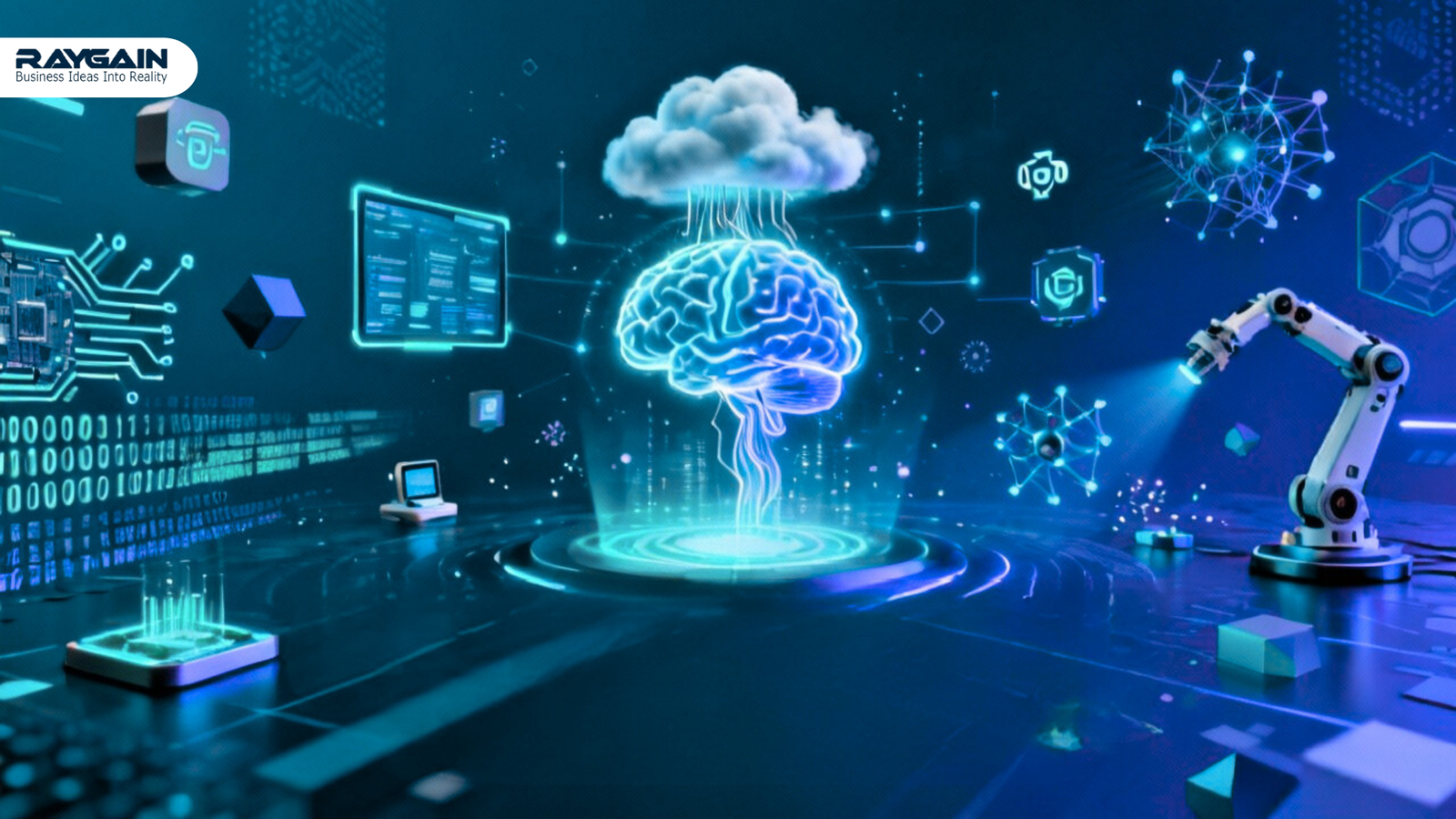The industrial world is standing on the edge of its next great leap-the SmartFactory revolution. As manufacturing continues to evolve from the automation age of Industry 4.0 toward an ever more intelligent, connected, and autonomous future, every industrial automation company is rethinking strategies, technologies, and infrastructures. The SmartFactory of 2025 isn’t just an evolution-it’s a
transformation that’s redefining efficiency, sustainability, and human-machine collaboration.
From Industry 4.0 to SmartFactory: The Next Evolution
Industry 4.0 brought automation, robotics, and real-time data into the mainstream of manufacturing. Machines got smarter, processes quicker, and analytics was the brain for every function. Moving towards 2025, however, the focus is shifting from automation to intelligence: the SmartFactory represents a factory environment where machines will communicate, analyze, and make decisions on their own.
Unlike traditional automation, which relies on pre-programmed logic, a SmartFactory employs AI, machine learning, IoT sensors, and edge computing for real-time adaptation and optimization. It’s not just about running operations; it’s also about learning from them. This transition is exactly why every industrial automation company has invested heavily in SmartFactory ecosystems.
The Current Landscape: How SmartFactories Are Taking Shape
Over the past couple of years, industrial ecosystems have been rapidly integrating digital intelligence into their production lines in different parts of the world. The SmartFactory today is already a complex blend of robotics, IoT networks, real-time analytics, digital twins, and private 5G connectivity that enable factories to operate with precision and predictability that was never seen before.
So far, several countries like India are gearing up with the principles of Industry 4.0. Complemented by government initiatives like Make in India and Digital India, factories are being re-engineered for connectivity, automation, and data-driven control. The year 2025 is poised to be a turning point when SmartFactory adoption will no longer be a competitive advantage but rather one of survival.
As a forward-thinking industrial automation company, Raygain Technologies has been at the forefront of this evolution in building digital ecosystems powered by AI, integration of SCADA-HMI, Private 5G, and OT-IT security that make factories truly “smart.”
Key Trends Driving the SmartFactory Revolution
1. Artificial Intelligence and Machine Learning Integration
AI is the beating heart of SmartFactory, enabling machine learning algorithms to learn continuously from production data in order to predict failures, optimally use resources, and improve product quality. Predictive maintenance powered by AI can cut downtime as much as 50%, saving millions every year in lost productivity.
AI doesn’t just detect problems in SmartFactory; it solves them before they occur. Analyzing vibration data, temperature fluctuations, and energy anomalies, AI systems automatically initiate all preventive actions to ensure seamless operations and minimum human intervention.
2. Internet of Things (IoT) and Real-Time Connectivity
Every device, sensor, and robot within a SmartFactory can interconnect via IoT networks. These sensors create and share several essential data about the operation in real time for 360-degree visibility into the factory floor. IoT does not stop with ensuring better traceability but also enhances safety, efficiency, and energy management.
With the roll-out of Private 5G networks, IoT devices can communicate at lightning speed with ultra-low latency, thus enabling real-time automation, remote control, and data synchronization across huge industrial sites.
3. Digital Twins and Simulation Intelligence
One of the defining features of the SmartFactory is something called the digital twin: a virtual replica of physical assets, processes, or even entire facilities. Utilizing real-time data, digital twins virtually simulate operations that enable engineers to test scenarios, find inefficiencies, and predict outcomes without interrupting production.
The convergence of the physical and digital worlds empowers factories to predict challenges in advance, virtually experiment with solutions, and have unparalleled accuracy in production planning.
4. Edge Computing and Data Sovereignty
While cloud computing has long powered industrial analytics, SmartFactories are increasingly adopting edge computing. In edge computing, data processing occurs closer to the point of generation-at the factory floor-enabling real-time decisions without depending on distant servers.
For a modern industrial automation company, edge computing offers two major advantages: faster response times and stronger data sovereignty. Sensitive operational data stays within the facility, reducing the cybersecurity risk while keeping compliance with regulations.
5. Human-Machine Collaboration and Industry 5.0
As automation gets smarter, the next evolution-Industry 5.0-brings humans back into the loop, but not as operators; rather, as collaborators. SmartFactory 2025 will find robots and humans cooperating effortlessly, precision intermingled with creativity. While Cobots-a short form of collaborative robots-will handle repetitive tasks, humans will remain at the core of innovation, quality improvement, and design.
A balance between automation and human intelligence makes the SmartFactory not only efficient but also adaptable and resilient.
Challenges Every Industrial Automation Company Must Overcome
While the promise of the SmartFactory is immense, the journey is not without obstacles. Some of the biggest challenges that an industrial automation company faces today are:
Integration Complexity: Integrating the old machinery with new digital systems is expensive and requires considerable time.
Cybersecurity Risks: The connected factory will increasingly be a target of cyberattacks. SmartFactories require advanced OT-IT security solutions, such as data diodes and network segmentation.
Data Overload: The huge amount of data coming from the sensors of IoT-based technologies requires strong analytics frameworks to manage, store, and analyze.
Skilled workforce gap: Demand for multi-disciplinary talent in areas of AI, robotics, and automation is creating a global skills gap.
Yet, these challenges are also opportunities, as they drive innovation and push companies like Raygain to design integrated, secure, and scalable automation architectures that will redefine the industrial future.
Opportunities: Why SmartFactory Is the Future of Manufacturing
The potential ROI of a SmartFactory is staggering: according to global estimates, companies adopting SmartFactory systems can reap up to 30% higher productivity, 40% fewer breakdowns, and 20% energy savings. For any industrial automation company, the business case is crystal clear: the SmartFactory is the basis of sustainable growth.
Here’s why the SmartFactory of 2025 is a game-changer:
Real-time decision making: immediate insights from data provide operators and AI with the capability to make better decisions faster.
Sustainability and green manufacturing: SmartFactories optimize energy consumption and reduce waste via intelligent monitoring.
Scalability and Customization: Easy scaling of operations or customizing production lines is made possible through modular architectures and cloud-edge integration.
Improved Quality and Traceability: End-to-end visibility guarantees zero-defect manufacturing with full traceability of every component.
These advantages are encouraging manufacturers worldwide to reimagine their operations-not as isolated plants but as dynamic, connected ecosystems.
Case Studies: SmartFactory in Action
1. Bosch SmartFactory, Germany
Bosch’s SmartFactory has become something of a benchmark for AI-driven manufacturing. With more than 200 machines connected in the facility, its predictive analytics framework has managed to achieve 25% higher productivity and near-zero unplanned downtime.
2. Tata Steel (India)
Closer home, Tata Steel has integrated IoT, machine learning, and advanced process control at its Jamshedpur facility. Its recent digital transformation has ensured significant energy optimization with enhanced product quality, serving as a role model for other Indian manufacturers in the SmartFactory concept.
3. Raygain’s SmartFactory Deployments
Raygain Technologies, a next-generation industrial automation company, has been leading the way in the transition of enterprises into SmartFactories with AI-enabled SCADA, Private 5G, and Industrial IoT solutions. From OT-IT integration to end-to-end visibility, cybersecurity, and real-time operational intelligence, Raygain brings together the pillars of a true SmartFactory ecosystem.
The Road Ahead: SmartFactory 2025 and Beyond
In 2025, it will no longer be futuristic to talk of SmartFactories; they will define the new industrial normal. Every industrial automation company that embraces AI, connectivity, and digital intelligence today will be leading the industrial economy of tomorrow.
The Factory of the Future won’t just automate processes; it will anticipate needs, learn from data, and improve constantly. It will also be smart, sustainable, and self-optimizing.
At Raygain Technologies, we don’t believe the SmartFactory is just a vision for 2025; it’s a journey we are already enabling today. The question isn’t whether your factory will become smart, but how soon.










